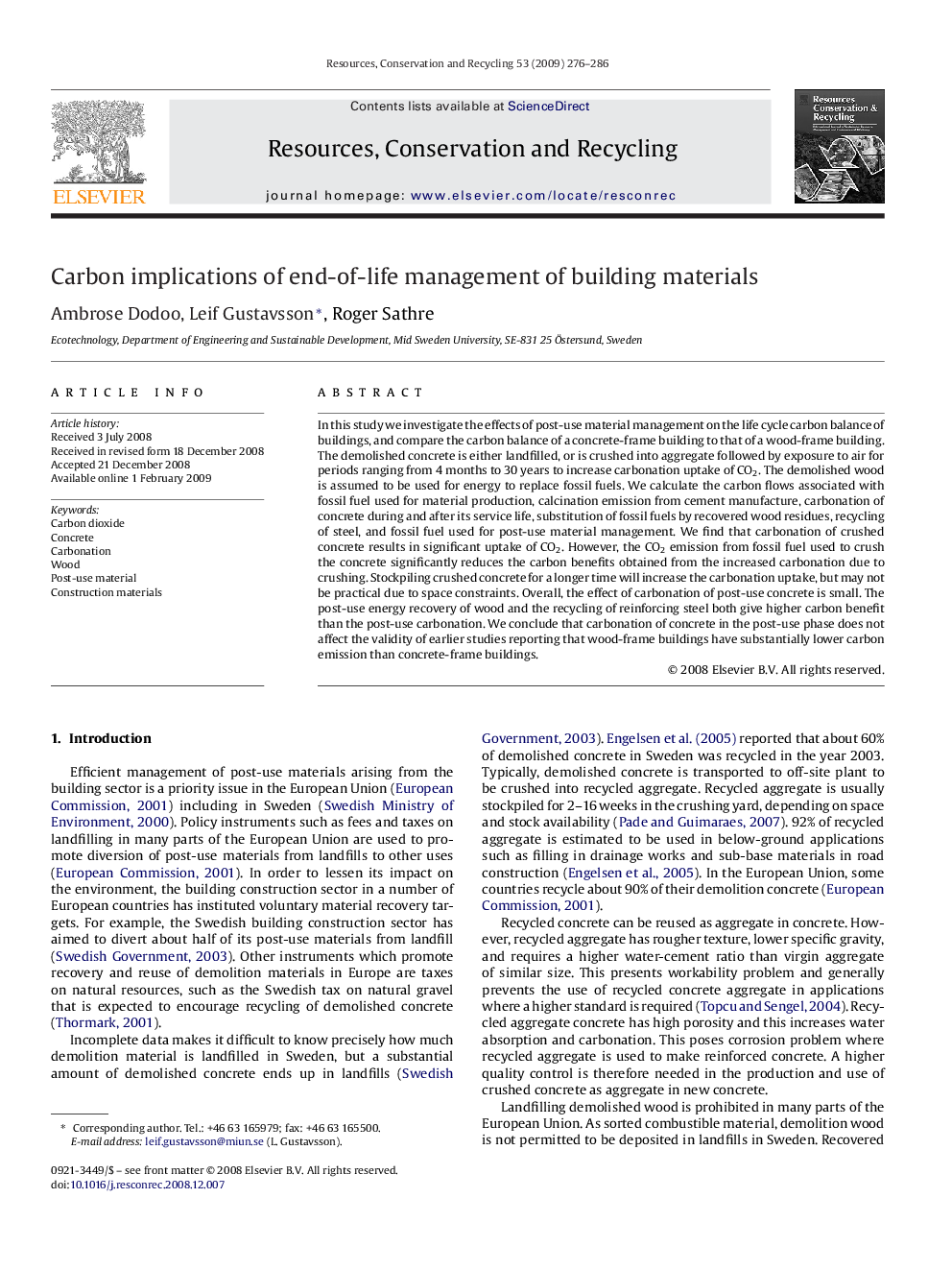| Article ID | Journal | Published Year | Pages | File Type |
|---|---|---|---|---|
| 1063572 | Resources, Conservation and Recycling | 2009 | 11 Pages |
In this study we investigate the effects of post-use material management on the life cycle carbon balance of buildings, and compare the carbon balance of a concrete-frame building to that of a wood-frame building. The demolished concrete is either landfilled, or is crushed into aggregate followed by exposure to air for periods ranging from 4 months to 30 years to increase carbonation uptake of CO2. The demolished wood is assumed to be used for energy to replace fossil fuels. We calculate the carbon flows associated with fossil fuel used for material production, calcination emission from cement manufacture, carbonation of concrete during and after its service life, substitution of fossil fuels by recovered wood residues, recycling of steel, and fossil fuel used for post-use material management. We find that carbonation of crushed concrete results in significant uptake of CO2. However, the CO2 emission from fossil fuel used to crush the concrete significantly reduces the carbon benefits obtained from the increased carbonation due to crushing. Stockpiling crushed concrete for a longer time will increase the carbonation uptake, but may not be practical due to space constraints. Overall, the effect of carbonation of post-use concrete is small. The post-use energy recovery of wood and the recycling of reinforcing steel both give higher carbon benefit than the post-use carbonation. We conclude that carbonation of concrete in the post-use phase does not affect the validity of earlier studies reporting that wood-frame buildings have substantially lower carbon emission than concrete-frame buildings.
